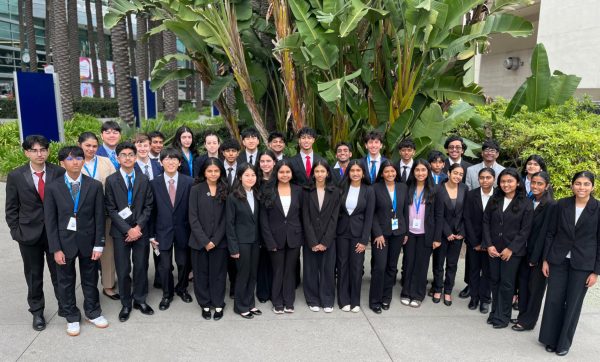The Community College Route After High School in California

Many students take the community college route out of high school to save money and attend smaller classes.
Throughout high school, many students overload their schedule with the toughest courses available in hopes of boosting their GPA and bearing a transcript that stands out to universities. Students face an overwhelming amount of pressure that in order to be considered to be an accomplished high school graduate, it is necessary to make it into a prestigious university such as a University of California school. Because of this, students tend to push away the inexpensive, convenient route of going to a two-year community college out of high school.
Roughly 100,000 California high school seniors apply each year to the competitive, high-ranked University of California system. The nine-school system’s world-class reputation attracts thousands of students beginning from their early years of high school. Many students dream of getting into the system’s prestigious schools such as UC Los Angeles, UC Berkeley, and more. These universities, on average, have acceptance rates as low as 9%, resulting in forthcoming applicants loading their high school schedule with tough classes and extracurriculars in hopes of making it into these competitive schools. “The UC system has highly-ranked, reputable academic programs, and many offer the major I want to pursue,” expresses Kelli Phan, a junior at Wilcox. “Going to a UC school would allow me to grow as an individual by making new friends and living in a new environment”.
Due to the spotlight put on the UC system, students tend to disregard the community college route after high school. In the Bay Area alone, there are over 25 two-year colleges, many of which are ranked among the best in the nation. Foothill College, located in Los Altos Hills, is ranked the number one community college in the nation by college research website Niche. De Anza College in Cupertino is ranked a top school for transfers to four-year schools.
Between housing, food, and course costs, the average in-state tuition for public four-year California universities is approximately $25,000, meaning the average cost for all four years is $100,000. The first two years of college are commonly reserved for general education courses and rarely any major-related courses. Instead of spending tens of thousands of dollars on their first two years of college solely to complete general education requirements, many students choose to attend community college, where they can complete these courses for only a couple thousand dollars. For in-state students, community college tuition is approximately $1,250 as of 2023. With the California College Promise Grant, a state-sponsored program that waives enrollment fees for eligible students (based on income), students can attend community college tuition-free. “I saved about $25,000 doing all my general education courses at community college, with the same lessons learned at the same degree as if I were to go to a four-year,” says Cassidy Chau, a De Anza College alumni.
Class sizes at community colleges are significantly smaller than those of four-year schools. Two-year college class sizes range from 25 to 35 students, while classes at four-year colleges can be as big as 150 to 300 students. This allows community college students to establish a closer relationship with their professors, as there are fewer students for these professors to accommodate.
“Community college helped me expand my college options and save money,” Chau continues. “Out of high school, I got rejected from every UC I applied to. Instead of settling for a school that my heart wasn’t in, I decided to go to community college. I met a lot of great people, joined a lot of extracurriculars, and took a lot of interesting classes with interesting professors. My GPA was 3.98, and I got into every college I applied to, including my dream school UCLA.”
The University of California system gives first priority to in-state community college students, meaning that taking the community college route gives students an advantage when applying compared to applying straight out of high school. Furthermore, four-year universities evaluate the progress that a student made in community college from high school, which is beneficial for students who did not perform well in high school.
Emily Dang, a senior at Saint Francis High School, expresses why she chooses not to take the community college route: “I prefer attending a four-year school because I already know what I want to major in. Even though going to community college saves a lot of money, I really want to be able to live on my own. Moving away to go to a community college wouldn’t be as ideal and contradicts my personal goals.” Similarly to Dang, many students avoid taking the community college route because they desire to live away from home. For many, it is not ideal to move away to go to community college. Most of these colleges do not have student housing on campus and students would have to pay for off-campus housing, resulting in expenses similar to that of a four-year college. Additionally, many students attend four-year universities in order to obtain the “college experience” – that is, to attend sports games and parties, and to be surrounded by a larger student population. Generally, four-year colleges offer a greater selection of programs for their students.
Deciding what route to take after high school can be very stressful for students, but they should be mindful that the community college route will allow them to obtain comparable education to that of a four-year college for a fraction of the price.





